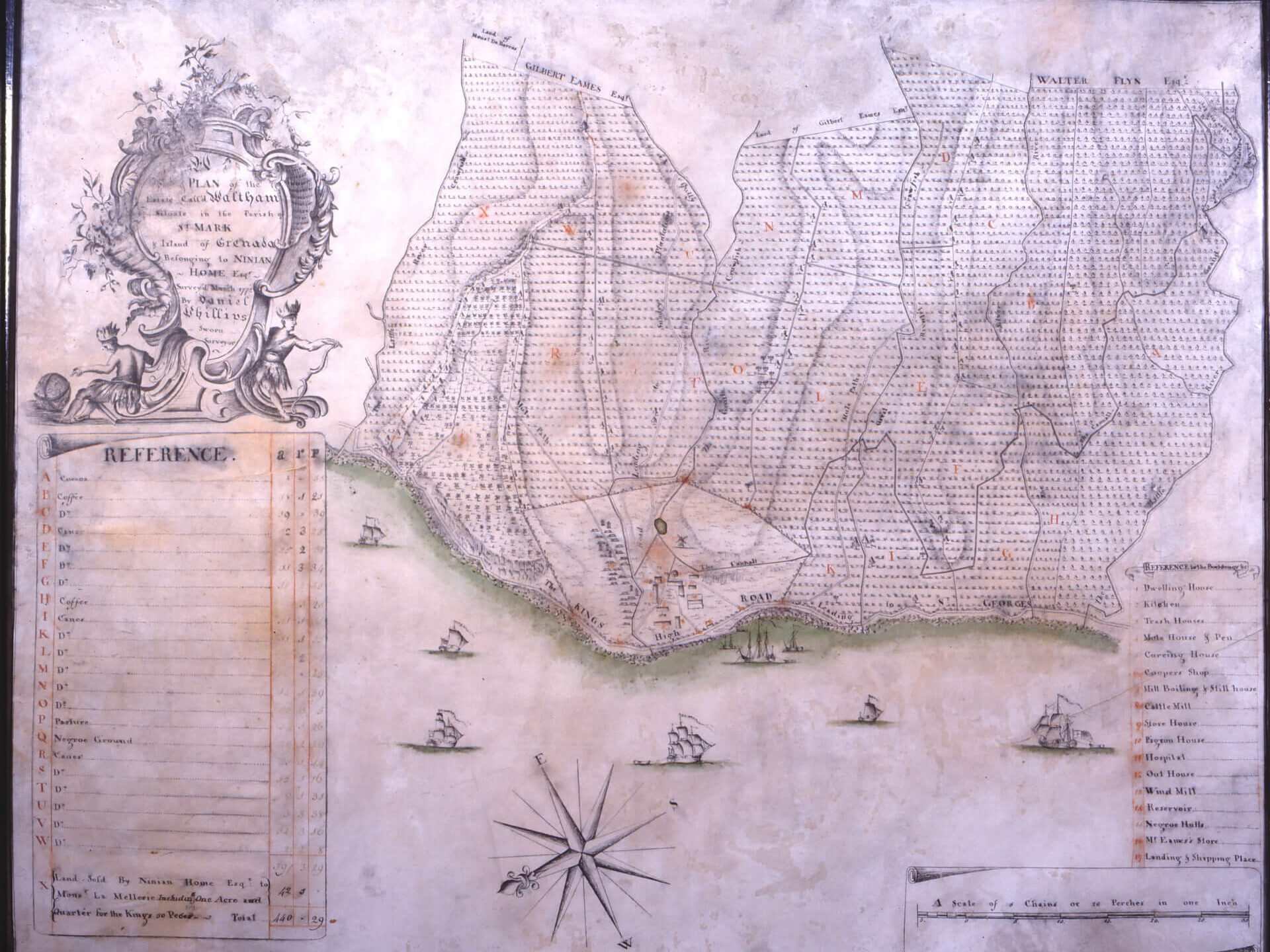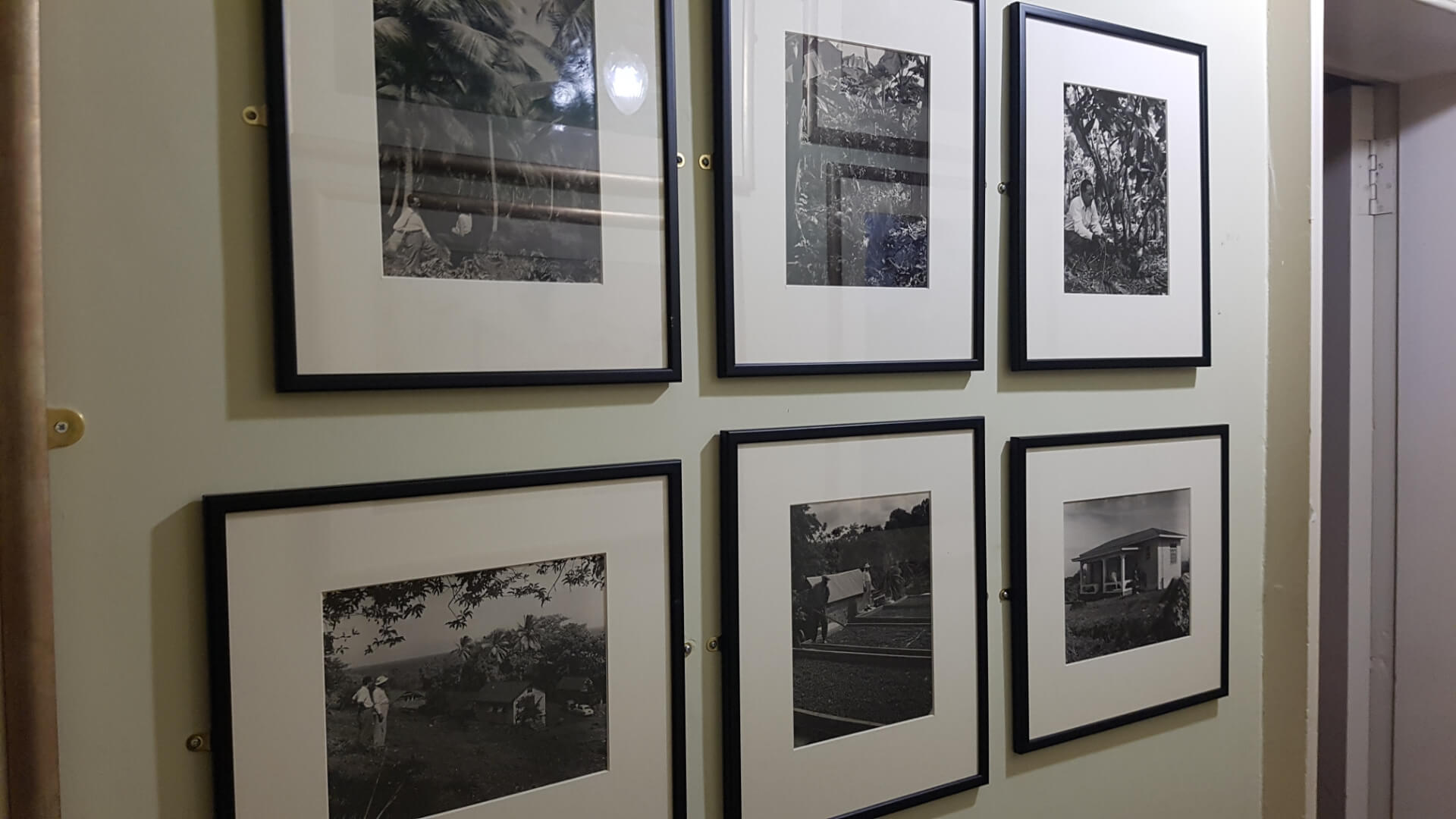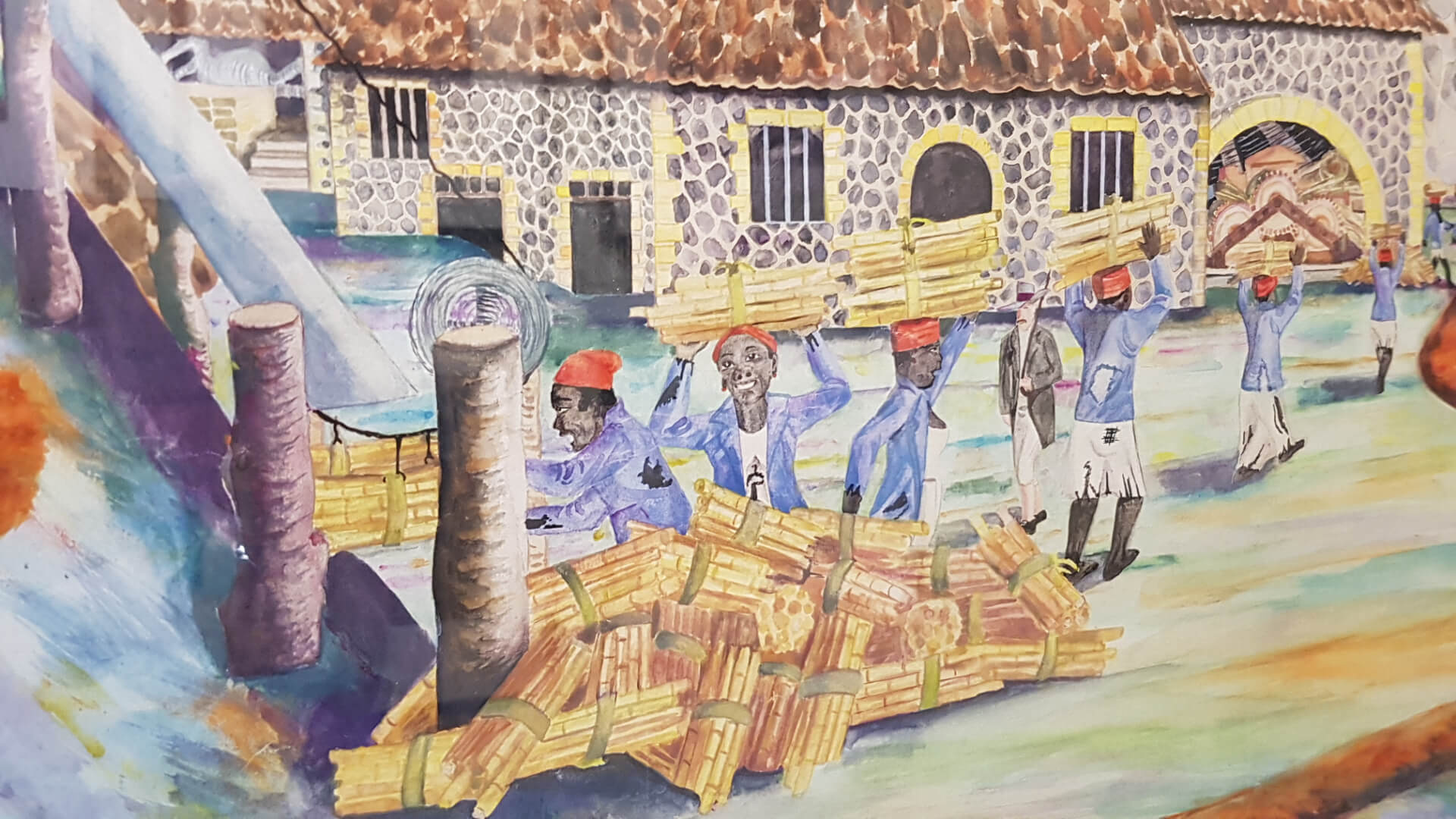Map of Waltham Estate, Grenada
Description
‘Plan of the Estate call’d Waltham situated in the Parish of St Mark, and Island of Grenada belonging to Ninian Home Esquire. Surveyed March 1772 by Daniel Phillips Sworn Surveyor’.
This unique map shows in detail the crop use on the Waltham estate and the buildings used to process them, and to house the people living there. Also visible is the extensive canal system constructed under French rule by enslaved African people.
Three types of power were in use at Waltham – the windmill, the cattle mill and the waterwheel – all used to crush sugarcane or grind other crops. The aqueduct running off from the canal carried water to an enormous waterwheel which was adjacent to the Mill House and connecting Boiling House.
The enslaved people’s homes were to the north-west side of the main buildings. They were given a large area to grow their own crops, allotment style. This work was done in addition to working almost every day of the year, twelve hours a day. Under George Home (and possibly Ninian’s management), the enslaved people were given time off to do this from plantation work. The original key uses, now unacceptable, 18th century terms to describe these buildings.
The landing stage is just visible with ships indicating the produce and goods that needed to be unloaded and loaded for import and export from Waltham. This map was used to create the model of Waltham in the exhibition at Paxton House. No surviving images of Waltham exist, so the paintings of Paraclete were used as contemporary source material, along with many other sources including the archives of the Home family.
![]()
This painting was conserved in 2022 with a grant from the Esmée Fairbairn Collections Fund.




